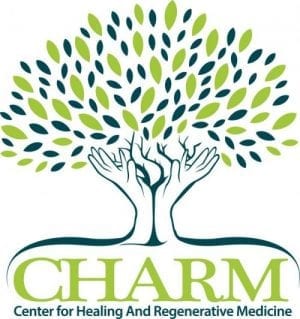By Dr. Kyle Allan
Back pain is one of those universal experiences that can turn a good day upside down. Whether it’s a dull ache from sitting too long, a sharp twinge from an old injury, or that radiating sting down your leg from a pinched nerve, it’s an issue that affects many.
For decades, steroid injections have been the standard fix due to their ability to dial down inflammation fast. But here’s the catch: steroids might give you a break from the pain, but they’re not solving the actual problem. In fact, they could even weaken your spine over time.
Fortunately, regenerative medicine—like Platelet-Rich Plasma (PRP) therapy, Bone Marrow Aspirate Concentrate (BMAC), and Platelet Lysate—is stepping up, offering safer, longer-lasting ways to get you moving again.
What Causes Back Pain?
Back pain is one of the most common physical complaints, often resulting from a combination of lifestyle factors, muscle strain, and structural issues within the spine. It can occur suddenly from an injury, such as lifting something heavy incorrectly, or develop gradually due to poor posture, sedentary habits, or repetitive movements.
Ultimately, the spine is a complex structure made up of bones (vertebrae), discs, nerves, and muscles. When any part becomes stressed or inflamed, it can trigger discomfort or pain. Conditions like herniated discs, arthritis, or spinal stenosis can also contribute to chronic back pain, making proper diagnosis and treatment essential for relief.
The Problem With Steroid Injections for Back Pain
Steroid shots, like cortisone, target spine inflammation, often bringing relief within days. It’s why they’re so popular. But the pain relief is temporary, and what’s worse, research suggests that repeated steroid use can weaken spinal tissues, including ligaments, bones, and tendons, potentially making your back more fragile in the long run. This isn’t a great trade-off for anyone hoping to stay active, whether lifting groceries or hitting the hiking trail.
Regenerative Medicine: An Alternative to Steroid Injections
Fortunately, regenerative therapy flips the script from masking pain to helping your body actually heal. Take PRP, for example. It’s made from your own blood—just a quick draw, spun in a machine to concentrate the platelets, which are loaded with natural healing factors. Injected into your back, PRP can reduce pain by supporting tissue repair, all without the risks of steroids. Recent studies show PRP outperforms steroids for lasting pain relief and function, especially for conditions like degenerative discs or facet joint issues.
Then there’s Bone Marrow Aspirate Concentrate, a form of stem cell therapy, taken from a small sample of your bone marrow (usually your hip). It’s rich in healing components, including growth factors and cells that promote recovery, stabilizing damaged areas and slowing further breakdown. Think of it as boosting your spine to hold up better over time.
For those with radiating leg pain from a pinched nerve—called radicular pain or commonly referred to as sciatica—there’s another option: Platelet Lysate. This approach is a variation of PRP in which the platelets are broken down to release their healing factors in a more targeted way, and the inflammatory components are removed, providing more rapid relief.
Injected near the irritated nerve (an epidural approach), Platelet Lysate can ease that burning, shooting pain without the downsides of steroids. I’ve had patients— a 50-year-old weekend warrior with sciatica, for example—who switched from steroid epidurals to Platelet Lysate and found they could resume their activities again.
What’s most exciting about these regenerative medicine treatments is their potential to step in early. If you’re starting to feel stiffness or occasional pain, PRP or stem cell therapy could help strengthen your back and prevent worse problems down the road.
Get Long-Term Back Pain Relief with Regenerative Medicine
Although Platelet Lysate can rapidly reduce pain and inflammation, many regenerative medicine options aren’t instant. They can take weeks to months to show their full effect, and are not always covered by insurance. But the payoff? Patients tell me it’s worth it—less pain, more mobility, and no worrying about the long-term damage steroids might bring.
If back pain is slowing you down, don’t settle for a quick fix that fades. Request an appointment today to see how regenerative options, like PRP, BMAC, or Platelet Lysate, can help. Your back deserves a solution that lasts—one that keeps you active, not just patched up.
*Actual Patient names were not used
_____________________________________________________________________________________
Authored and medically reviewed by Dr. Kyle Allan
Dr. Kyle Allan, DO, is a board-certified specialist in Osteopathic Neuromuscular Medicine and Osteopathic Manipulative Medicine. Fellowship-Trained in Sports and Interventional Spine. Austin, Texas.

